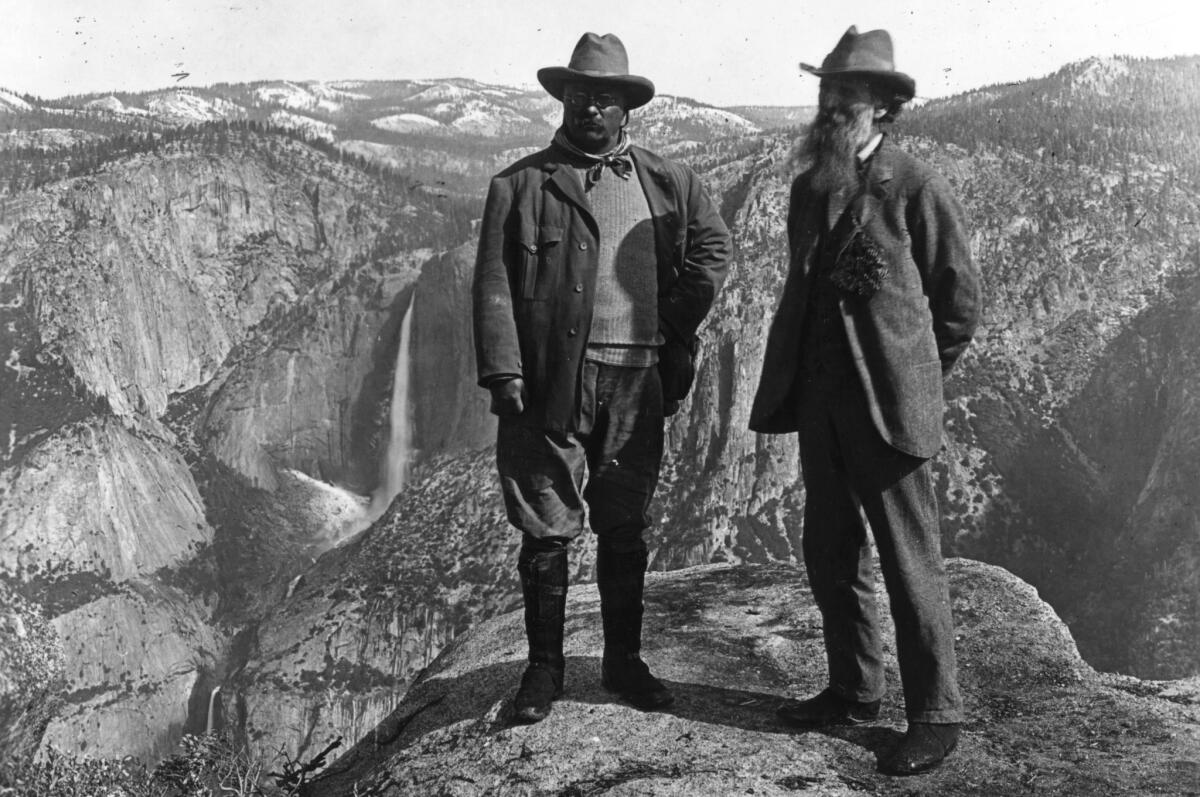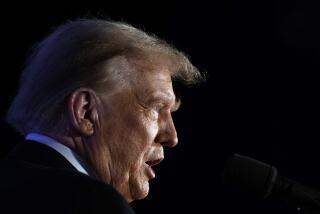Op-Ed: Donât be fooled by Trump or Sanders – there is no such thing as an âauthenticâ candidate

The resilient popularity of Bernie Sandersâ unreconstructed socialism and Donald Trumpâs unfiltered populism make it clear that the electorate this year is craving âauthenticity.â Though miles apart ideologically, both insurgents promise to tell it like it is, while their rivals strike many voters as calculating, crafted and too reliant on spin doctors.
This taste for the apparently uncoached and unscripted goes way back; more than a century ago, the rise of image management was already sowing skepticism about campaign-trail stagecraft and stimulating a hunger for unvarnished candidates. Yet despite its deep roots, our disdain for artifice is itself somewhat superficial. In reality, weâre quite happy to tolerate some image-making when it produces a leader with political traits we find congenial.
You could say weâre in an age of the âspin of no spin,â where politicians work ever harder to project the image that theyâre not projecting an image at all.
Theodore Roosevelt, one of the first presidents to fully exploit the media for self-promotion, was a full-fledged celebrity before entering the White House. His theatrics â in fighting the Spanish in Cuba and later in countless publicity stunts he undertook as president â earned him the devotion of millions. But they also brought on attacks. South Carolina Democrat âPitchforkâ Ben Tillman, an unremitting critic, thundered from the Senate floor that TR achieved his success only by seducing the Washington press corps and otherwise manipulating the media.
Unquestionably, Roosevelt assiduously constructed and tended his public image. But that didnât make him a phony. âTo criticize Roosevelt for love of the camera and the headline is childish,â John Dewey said. âA petty deed cannot be made great by heralding, and ⌠his acts commanded publicity because they were in the first place of a quality to command attention.â
TRâs rival, Woodrow Wilson, grasped the situation too. Roosevelt âappeals to their imagination; I do not,â Wilson wrote. âHe is a real, vivid person. ⌠I am a vague, conjectural personality, more made up of opinions and academic prepossessions than of human traits and red corpuscles.â
Nonetheless, Wilson reached the presidency and won reelection on the basis of his inspiring vision and his historic achievements in office. But he suffered from the perception of emotional detachment. To his own detriment, he showed a regal disdain for using new technologies to humanize himself. Only with reluctance would he pose for photographs, participate in newsreel films, record his speeches for distribution or even chat up the press. This aversion was true to Wilsonâs temperament, but instead of winning him praise for being authentic, it frustrated his aides, alienated reporters and squandered chances to reach voters.
In the 1920s, Calvin Coolidge managed to turn a reserved personality into an advantage. Taciturn by nature, Coolidge worked with the pioneering advertising genius Bruce Barton to hone his image as âSilent Calâ â exploiting radio, strategically giving interviews, gamely posing for artful pictures on his fatherâs Vermont farm. After the Teapot Dome scandals, Coolidge parlayed his quiet modesty and flinty integrity into markers of moral reliability in an age of kinetic change. He was beloved not just because he oversaw rising prosperity but also because, the columnist Walter Lippmann wrote, he offered a âPuritanism de luxe, in which it is possible to praise all the classic virtues while continuing to enjoy all the modern conveniences.â
Subsequent presidents, too, appreciated the value of appearing natural, even if they figured it out with the help of experts. Harry Truman, known for his no-nonsense style, studied behind the scenes with a radio coach, Leonard Reinsch, who taught him to slow down while speaking, pause for dramatic effect, and modulate his voice to create a range of tones and expressions. The rave reviews Truman got for his ad-lib delivery at the 1948 Democratic convention resulted from much practice.
Dwight Eisenhower struggled as a candidate to reach voters, prompting Bruce Barton, Coolidgeâs old guru, to instruct Ike to try to seem as if he were âtalking to people as one frank, unassuming American to his fellow Americans.â After similar suggestions from Sig Larmon of the Young & Rubicam ad agency, Eisenhower dramatically announced in mid-June 1952 that he was jettisoning his speechwriters.
âAll my prepared remarks are thrown out the window,â he declared before a Detroit audience. âIf I make blunders, I know my friends will excuse it. I hope the others will realize at least that Iâm sincere.â
The declaration triggered a wave of effusive press. âWe are going through the process of meeting a man of courage and conviction,â a New York Times editorial said, âand we are meeting him without the intermediaries of speech-preparers.â But the speechwriters soon came back to work.
Since the cataclysms of dishonesty represented by Watergate and Vietnam, itâs been common to run for president as the candidate who rejects spin. You could say weâre in an age of the âspin of no spin,â where politicians work ever harder to project the image that theyâre not projecting an image at all.
An early exemplar was Jimmy Carter, who presented himself as a simple peanut farmer from Plains, Ga., and pledged never to lie to the public. But eventually Carter faced the headwinds of skeptical journalism. Critics derided him as a âmedia phenomenonâ who misrepresented his credentials â his peanut farming, for example, was a lucrative agribusiness that warehoused and shelled other farmersâ nuts. Stories appeared about Carterâs slick consultants, such as the brash young pollster Pat Caddell and the cagey Atlanta ad man Gerald Rafshoon.
In 2008, John McCain and Barack Obama both wanted voters to believe in the spin of no spin. McCain, a self-styled maverick, had a penchant for blunt and funny remarks that got him labeled âthe anti-candidateâ by the novelist David Foster Wallace. Obama, meanwhile, pledged âless spin and more straight talk.â Both men had (and still employ) legions of strategists and spin doctors shaping their messages.
As it turns out, we donât choose candidates based on whether they rely on speechwriters or pollsters. We vote for candidates who are, among other things, personable, down to earth, direct, ideologically consistent, given to spontaneity, good at articulating our hopes and fears, funny, comfortable on the political stage and able to criticize the conventions of politics. Effectively conveying any of those qualities may be, in part, a natural talent. But it also requires putting the best spin on the candidateâs agenda and persona. The âauthenticâ politician is a myth, created by experts who traffic in the art of spin.
David Greenberg, a professor of history and of journalism and media studies at Rutgers, is the author of âRepublic of Spin: An Inside History of the American Presidency.â
Follow the Opinion section on Twitter @latimesopinion and Facebook
More to Read
A cure for the common opinion
Get thought-provoking perspectives with our weekly newsletter.
You may occasionally receive promotional content from the Los Angeles Times.










